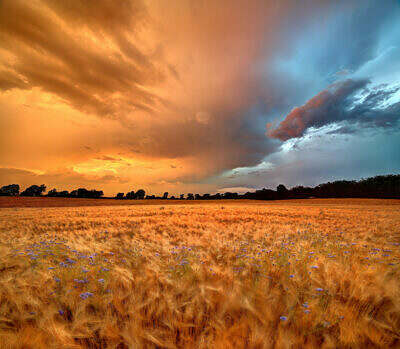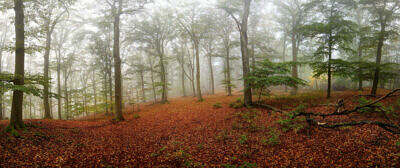Mature beech trees reach a height of 30 to 45 meters (98 to 148 feet) and live for an astonishing 300 to 500 years. It is not uncommon for their trunk diameters to reach two meters (7 feet). Such large trees have extensive crowns and form a dense canopy that shrouds the forest floor in deep shade. Hardly a ray of sunshine ever reaches the ground, and on hot summer days, the climate is refreshingly cool and humid. However, this climate is anything but ideal for the young trees, because they lack the required sunlight. Beech trees solve this problem in an extremely social way. With their root system, they not only communicate with each other, but also help each other.
-
Winter fog in the beech forst
The Crown of the Forest
- The Tree Cathedral
- Chasing Stormlight into Midnight
- Spellbound in Silent Solitude
- In the Cloud Forest of Armored Fish





